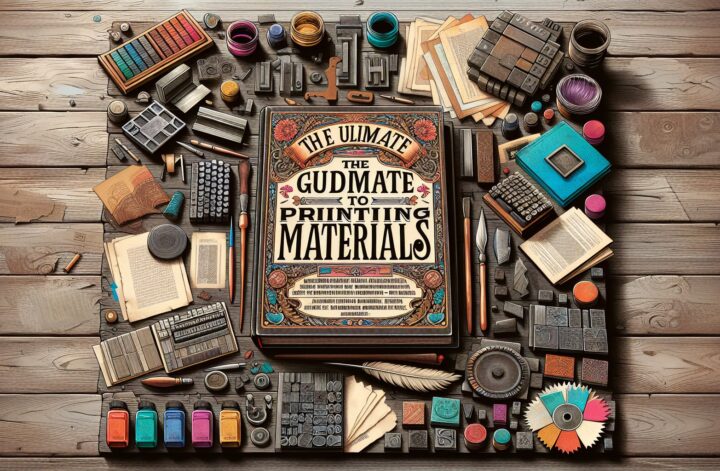Printing has been an essential part of human communication for centuries. From ancient woodblock prints to modern digital printing, the materials used in the printing process play a crucial role in determining the quality and longevity of the final product. In this comprehensive guide, we will explore various printing materials, their characteristics, and how to choose the right material for your specific printing needs.
Introduction to Printing Materials
Printing materials encompass a wide range of substrates used to transfer text or images onto a surface. These materials may vary in texture, weight, durability, and finish, allowing for a diverse range of printing applications. From paper and cardstock to fabrics and plastics, understanding the different qualities and capabilities of these materials is essential in achieving the desired outcome for any printing project.
The Importance of Choosing the Right Printing Material
Selecting the appropriate printing material is crucial as it directly impacts the final appearance, feel, and durability of the print. Depending on the application, one must consider factors such as longevity, color vibrancy, texture, and resistance to external elements. Whether you are printing business cards, marketing brochures, packaging labels, or even fine art prints, choosing the right material can make a significant difference in the overall quality and effectiveness of your print.
Common Printing Materials
1. Paper
Paper is the most commonly used and versatile printing material. It is available in various weights, thicknesses, finishes, and colors. Standard paper is typically used for everyday printing needs, such as documents and flyers. However, specialty papers like matte, glossy, or textured finishes are often preferred for brochures, photographs, or artwork, as they enhance visual appeal and texture.
2. Cardstock
Cardstock, also known as cover stock, is thicker and sturdier than regular paper. It is commonly used for business cards, postcards, greeting cards, and invitations. The thickness of cardstock ensures a professional look and feel for these types of prints, making them more durable and resistant to wear and tear.
3. Fabrics
Printing on fabrics opens up a world of possibilities for customized clothing, home decor, and other textile-based projects. Fabrics like cotton, silk, polyester, and canvas can be printed using various techniques such as screen printing, heat transfer, or digital printing. The choice of fabric greatly influences the final appearance and feel of the print, making it essential to select a material suitable for the intended use.
4. Plastics
Plastics provide a durable and versatile option for printing materials. They can be used in applications ranging from product labeling to promotional items. Depending on the desired outcome, plastic materials may include PVC, vinyl, acrylic, or polycarbonate. Each type of plastic offers different characteristics such as transparency, flexibility, or weather resistance, making them suitable for various printing needs.
Factors to Consider When Choosing Printing Materials
1. Intended Use
The first and foremost aspect to consider is the intended use of the print. Is it a temporary or long-term application? Will it be exposed to harsh environmental conditions or frequent handling? Understanding the purpose of the print will help determine the durability and resilience required from the chosen material.
2. Print Technique
Different printing techniques may require specific materials to achieve optimal results. For instance, inkjet printers are suitable for printing on paper and cardstock, while screen printing may be ideal for printing on fabrics. Consider the capabilities and limitations of your chosen printing technique to make an informed decision about the appropriate material.
3. Budget
Printing materials vary in cost, primarily based on their quality, durability, and uniqueness. Setting a budget for your printing project allows you to narrow down the available options and choose a material that strikes a balance between affordability and quality.
4. Aesthetic Appeal
The visual and tactile characteristics of the printing material greatly impact the overall aesthetic appeal of the print. Consider factors such as color vibrancy, texture, transparency, and finish to select a material that aligns with your desired result. For example, a smooth and glossy finish is often preferred for high-resolution photographs, while a textured matte finish may be better suited for vintage-style prints.
Conclusion
Choosing the right printing material is a fundamental step in ensuring high-quality prints that meet the intended purpose. By understanding the unique characteristics of various materials and considering factors such as intended use, print technique, budget, and aesthetic appeal, you can confidently select the most suitable material for your printing project. Whether it’s paper and cardstock for everyday prints or fabrics and plastics for more specialized applications, the right material will elevate the quality of your prints and leave a lasting impression. So, explore the possibilities, experiment, and let your creativity take flight with the right printing material for your needs.

